| Music Box |
Leontief Lover's Song of the Week:
ARTIST:Ryan and Chad ft. MLB PLAYERS
SONG: I Don't Dance (MLB PLAYERS REMIX)
ALBUM: High School Musical 2

|
| Comment Box |
|
|
| Please leave your comments about our blog and the articles you have read here, if you are not a blogger. Thank you very much! :) |
| Members |
| Zerge Zandueta
20 years old and counting, this dude loves sports and videogames. he hopes to contribute something good to society one day and make other people happy
"Humanity is the virtue of a woman, generosity that of a man." - Adam Smith
Kathryn Pua
this perky girl never fails to brighten up anyone's day. very friendly, approachable and outgoing, this person enjoys going out with her barkada, though an 'introvert' at heart
"And very often the influence exerted on a person's character by the amount of his income is hardly less, if it is less, than that exerted by the way in which it is earned." - Alfred Marshall
Bea Lim
they say silent water runs deep. this girl may seem quiet at first, but once you get to know her, you're in for loads of fun
"The friend of the present order of things condemns all political speculations in the gross." - Thomas Malthus
Raymond Lee
a 23 year old korean who makes all the girls go "ga-ga." 'nuff said. ;)
"Entrepreneurial profit is the expression of the value of what the entrepreneur contributes to production." - Joseph A. Schumpeter
Carlo Medina
hypnotic on the hardcourt, this basketball icon is not only good at putting 2 on the board but 3 on the report card
"In the long run we are all dead." - John Maynard Keynes
|
| Learning Corner |
Eco Lesson of The Week : Determinants of Supply and Demand
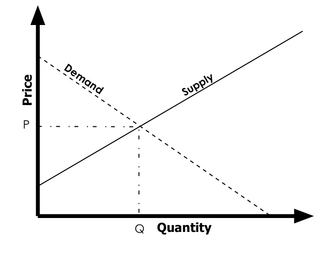
The intersection of the supply (upward sloping) and demand (downward sloping) curves is called the equilibrium pt. This point represents the price at which goods are sold and purchased at the market. However,
this equilibrium point may change depending on a shift by the curves. The curves may shift one at a time or at the same time both either upwards or downwards. An upward
shift by either curve would raise the price, while a downward shift would lower it.
What we want to know this week is what causes these shifts in supply and demand, called their determinants.
The Determinants of Supply
1. Costs of production
2. Profitability of alternate goods in supply
3. Natural occurences
4. Expectations of future prices
5. Profitability of goods in joint supply
6. The number of sellers
The Determinants of Demand
1. Tastes, fashions, preferences
2. The number and price of related goods
3. Income
4. Expectation of future prices
5. Population
Reference: http://www.cr1.dircon.co.uk/pdffiles/determinants.pdf
|
| Cartoon Corner |
By: Paul Combs (The Tampa Tribune)

By: Clay Bennet (The Christian Science Monitor, Boston)
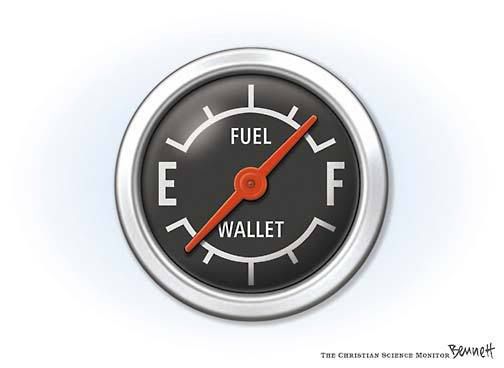
By: Thomas Boldt (The Calgary Sun, Alberta, Canada)

|
|
| Friday, October 12, 2007 |
| Worth the Crunch? |
Worth the Crunch?
By Zerge Zandueta
One way my family bonds together is through our weekly grocery shopping. During Sunday afternoons, after Church, lunch, and a leisurely stroll at one of Metro Manila’s malls, we usually drop by at Shopwise or Unimart to purchase the following week’s necessities. This is a very relaxing activity for me, as it takes my mind off the stressfulness of school and focuses my attention on something else: food.
I love grocery shopping because I get to choose what I want to eat for the upcoming 7 days. Depending on moods, I’ll grab different goods from their shelves and stuff them onto the grocery cart. On some weeks I’ll feel like I want to eat healthy, and so I’ll get salad dressings, packaged greens, canned peaches, instant oatmeal, nuts, and granola bars. Sometimes, I crave for snacks to eat in front of the TV, and so I’ll buy potato chips, chocolates, cookies, and other junk foods. What I want to focus on here is a surprising trend regarding my family’s purchase of these junk foods.
On average, our groceries range from 4K-4.8K a week. Of that amount, 1/4th comes from the acquisition of junk food. Shocking? Not really. But yes, head-scratching when you take into account that before, when my mother did the groceries alone, she only had to pay 1.8K – 2K. No, this sudden increase in total grocery cost could not be attributed to inflation. In fact, during my mother’s grocery shopping days, we always ended up having more junk food than today.
So what happened?
Well, for one thing, our “income” to be spent increased. When doing the grocery with our dad, our purchasing power just went up. My mother allocates 2K as the budget constraint when doing her groceries. However, with my dad, that amount basically went up I guess to 4.8K Of course, we don’t have to necessarily spend more, but human nature as it is, we are tempted to do so. This is in line with C.Northcote Parkinson’s second law, which states that “Expenditures rise to meet income.” 
But going over to the topic of junk food, why do we have less now and actually pay more?
According to the Neo-classical approach to economics, economic actors have preference over the allocation of the world’s resources. There are however constraints placed on these allocations that a person can achieve by such things as wealth, physical availability and socio-political institutions. Given these limits, people would choose the allocation they most prefer given the money in their pockets. Changes in the allocations people choose are due to changes to the constraints placed on these allocations.
When we had the increase in income, we changed the allocation of the groceries we buy, junk food specifically. Instead of buying a load of Piattos, V-cut, and Cheese Curls, we now shop for Lays, Doritos, and Ruffles. Just recently however, we stopped buying these brands in exchange for the kettle cooked versions such as Kettle Chips, Hardbite, Boulder, and Poore Brothers. When my mom was doing the groceries, she was buying junkfood worth 8-20 pesos a package. When my dad came along, we started buying potato chips costing 85-100 pesos a package. Now, with this new trend of crunchy hand-cooked chips, we pay 130 pesos for a similarly sized (5oz) package of Kettle. There was a change in the allocation of the junkfood we buy because there was a change in the income constraint of our family. We now opt to buy the higher quality good. While we do consume less junkfood now, we eat higher quality ones. This is also in line with the fact that demand for a product can decrease due to changes in consumer preferences. With the growing inclination towards the “healthy lifestyle,” people now move away from foods that are high in calories and trans fat. And so our family shelves the “evil” Cheese Curl girl aside for the lesser “evil” of Kettle Chips’ exquisite crunch (zero trans fat). Of course, Lays is trying to stay competitive by changing their cooking oil into sunflower oil. But for me and my family, their chips lack the crunch.
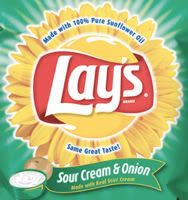
From this analysis it can also be seen that local junkfoods are inferior goods as compared to imported ones. When our purchasing power increased, we stopped buying these locally manufactured goods. Also however, different brands of junkfoods are very very close substitutes for one another. If ever for example, the price of Kettle Chips would unbelievably skyrocket to 500 pesos, I’m sure no one would buy it and switch to Lays instead. Also, the different flavours of potato chips are even closer substitutes for one another. As an example, just last Sunday, we bought 2 bags of “Lightly Salted” Kettle Chips instead of the usual “Cheddar Beer” since that flavour was on an 11 peso discount.
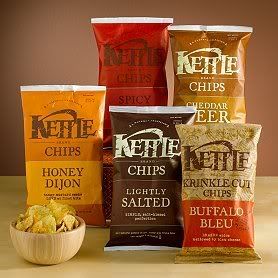
Perhaps all these underyling concepts regarding potato chips and junkfood can be explained by the fact that it is a monopolistically competitive market. The players basically sell the same product: fried potato. There are many buyers and sellers. As such, it is easy to switch to a different seller when the price of chips goes up unjustifiably. Still, to some degree however, sellers can dictate their prices through differentiation. Kettle can peg their prices higher because of the crunchiness and “healthiness” of their chips. Ruffles can set their own price because of the texture of their chips and their claim of it being very good for dipping. San Miguel’s E-aji, though with a price slightly higher is eating into the local junkfood market because of their innovative idea of including a dip in the package. Entry and exit is relatively easy. I could slice some potatoes now, fry them, and sell them. Although it isn’t really as simple as this, you get the point. However, because of this ease and low barriers to entry, economic profits equate to zero in the long run.
How we end up spending a thousand bucks on junk food now is a no-brainer. Simply buying 4 bags of kettle chips, 2 boxes of Chips Ahoy plus a handful of chocolates and other goodies and viola! We’re already there! I’m not sure however whether this new allocation of resources gives us more utility. Although I think so, I’m not sure if the utility added on to us negates the rise in our expenditures. I hope so though.
One advice some guy (Brian Tracy) gave in order to get rich was to violate Parkinson’s second law. Expenditures do not have to rise with income. The new difference gained from one’s salary raise could instead be invested to a money market account or whatnot instead of upping one’s standard of living. Sacrifice now, and at 10% annual return the investment you make can make you a millionaire earlier than you can imagine. In fact, if you just put away 5,000 per month of your earnings for 45 years at 10% annual return, with the power of compound interest, you end up with 50 million pesos in the end. (the dude Brian just said this, I’m not sure how it was exactly calculated though hehe) Doing the math, that’s 5,000 x 12 x 45 = 1,350,000. Subtracting that amount from 50 million, you stand to gain 48.65 M pesos. What more if you put in more than 5,000 a month? Hmm...
Boy, do I hope the chip is worth the crunch. |
posted by Leontief Lovers @ 3:56 PM  |
|
|
|
|
| About Me |
|

Name: Leontief Lovers
Home: Manila, Philippines
About Me: people wonder why we are called leontief lovers. it's simple, in eco, there is a canonical form of utilty and production function called Leontief Preferences / Technologies. In a two good/input world, you always would need the other good/input in order to remain satisfied/have the ability to produce... in other words, you will never substitute one good for another, you need to consume/use both goods at a fixed proportion at the same time... LIKEWISE, in our blog, WE WILL NEVER TRADE NOR SUBSTITUTE ECO FOR ANOTHER!
See my complete profile
|
| Time |
|
|
| Previous Post |
|
| Archives |
|
| Poll |
| |
| Links |
|
| Lovers Recommends |
| Books
"The World is Flat" by Thomas Friedman
"Confessions of an Economic Hitman" by John Perkins
Movies
"A Beautiful Mind"
"Wall Street"
|
| EcoBizLife |
|
| Fun Zone |
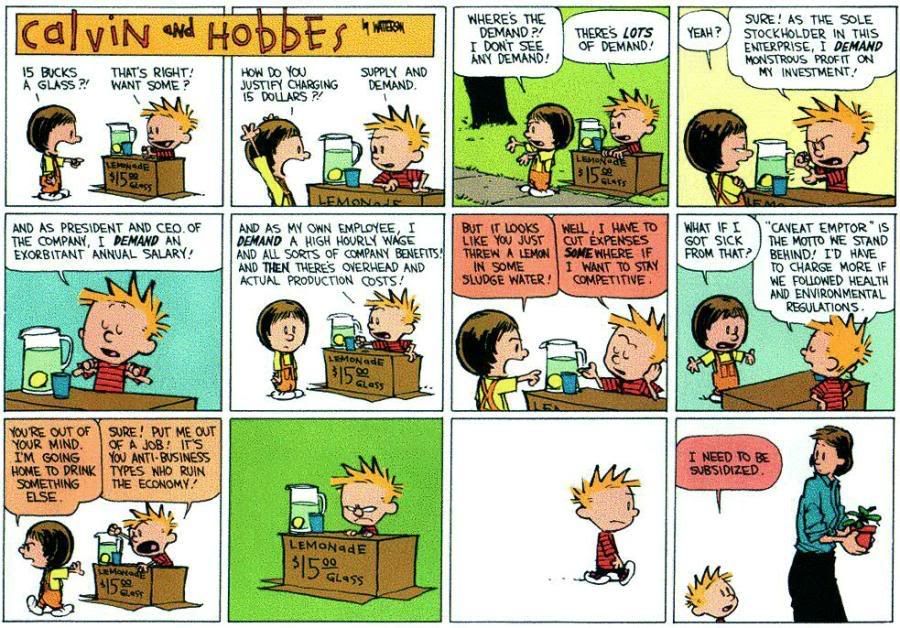
Calvin and Economics
Jokes
An economics professor and a student were strolling through the campus.
"Look," the student cried, "there's a $100 bill on the path!"
"No, you are mistaken," the wiser head replied. "That cannot be. If there were actually a $100 bill, someone would have picked it up."
Feudalism: You have two cows. Your lord takes some of the milk.
Socialism: You have two cows. State takes one and gives it to someone else.
Communism: You have two cows. State takes both of them and gives you as much milk as you need.
Bureaucratic Communism: You have two cows. State takes both of them and gives you as much milk as the regulations say you should need.
Bureaucracy: You have two cows. State regulates what you can feed them and when you can milk them. Then it pays you not to milk them. After that it takes both cows, shoots one, milks the other and pours the milk down the drain. Then it requires you to fill out forms accounting for the missing cows.
Fascism: You have two cows. State takes both of them and sells you milk.
Nazism: You have two cows. State takes both of them and shoots you.
Liberalism: You have two cows. State dosen't care whether you exist, let alone your cows.
Capitalism: You have two cows. You sell one and buy a bull.
PRICE IS IMPORTANT!
(disclaimer: may be a little off-color)
"My Dear, would you go to bed with me for a million dollars?"
"Well, yes, I guess I would."
"How about $100?"
"What kind of person do you think I am?"
"My Dear, we have already established that. We are merely haggling over the price!"
|
| Template by |

 |
|
